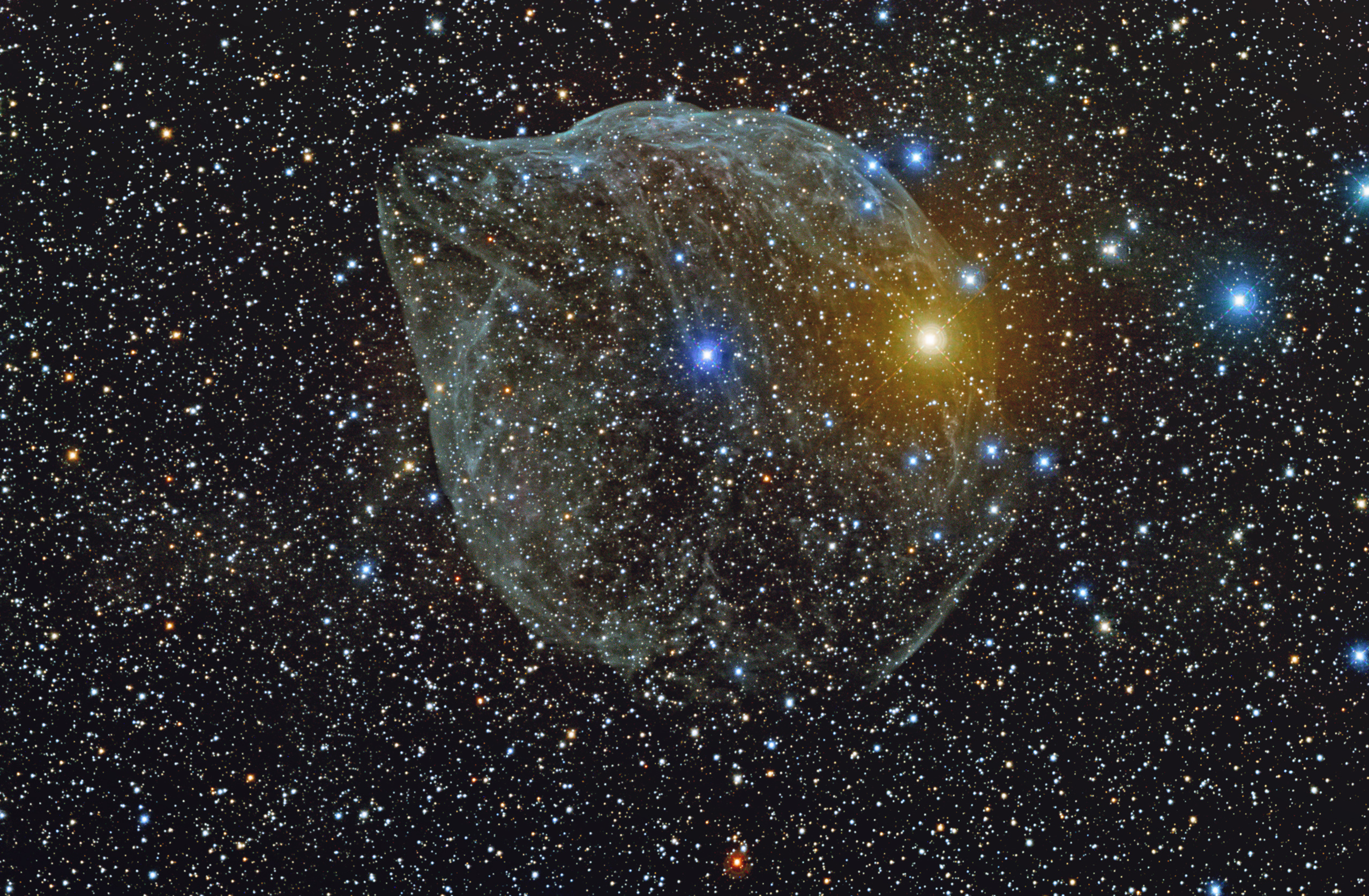Hello,
Nice work!
Did you start from the original raw FITS files?
It's a little hard to judge on the JPG, so if you could make the final FITS (esp the R and the V ones) available to me, I could have a deeper look. If you work with the JPG or TIF, beware that these images are already heavily processes, and that the noise texture is affected, i.e. you cannot rely on it for further analysis.
What puzzles me is the fact that the disk profile is fairly flat and then drops sharply, but that could very well be the "liberation" curve (ie the response curve you use to go from the FITS to the photoshop or gimp stage -reference to the FITSliberator program) is enhancing that feature.
I don't know which processing you used for the _colour_halo image, but I suspect you used some fairly strong smoothing with some advanced rejection. This causes some strong artefacts around the bright stars: some dark disks centred on the star. So, at that distance, what you see is dominated by the artifacts.
Look at the galaxy, going to-right: there is a ~plateau, then a dark lane, then the background becomes brighter again with artifacts. My guess is that the real halo stops at the end of the plateau, and that at least what comes beyond is not real. Also, for the part within the plateau, I suspect that some of it results from you "boosting" the parametres of the method a little too much. I'd recommend you try again, but seeing what happens is you focus on the getting the region marked in green on my attachment -I marked in red some regions where the artifacts completely dominate, so you could aim at getting these in the background. Then we'll see if the halo extends.
Great work!
oli
============================
...Also, you have quite strongly smoothed the background with some clever noise reduction algorithm.
For us, that's a problem, as these algorithms tend to be non linear (i.e. if a star is 2x brighter than another one in the input, it will not be exactly 2x brighter in the output), and as the error analysis is screwed up ( *all* our measurements always come with error bars; to estimate these, we need a careful and detailed analysis of the noise, which the smoothing affects). So, definitely great for a nice image! dealing with the little glitches in the CCD would make it perfect.
======================================
For us, the background noise is very important:
-the noise characteristics allow us to evaluate the data processing: the noise should be pure poisson, with a FWHM corresponding to what is expected from the sky photon noise. If it is not the case (typically it is not perfectly), we can then see if the flatfield went wrong/imperfect, or if there are some additional issues, like an electronic pick-up noise.
-the noise distribution allows us to quantify the limits on out detections. For instance, for very faint objects, we can then evaluate if the variations we see are compatible with the noise, or if there is some intrinsic variability.
We can not beat the noise, so we use it!
======================================
Typically we use twilight sky flats - that's the standard.
Dome flat are used only when TwiFF are not available or as part of a more advance FF technique.
The best is to combine Dome FF, TwiFF and night sky FF (ie using deep images on ~empty fields) -
the Dome FF have ~infinite signal-to-noise ratio, but very poor representation of the illumination; the TwifFF have decent S/N; the night FF have the best representation of the illumination, but have poor S/N. Using some techniques like wavelet filtering, one can extract the S/N from the DoFF, and combine it with the illumination from the TwiFF and the NiFF. Using that, you can flatfield at the 99.99% level. Of course, one needs that level only for specific cases; in most situation, 99% is more than enough.
Cheers
oli







